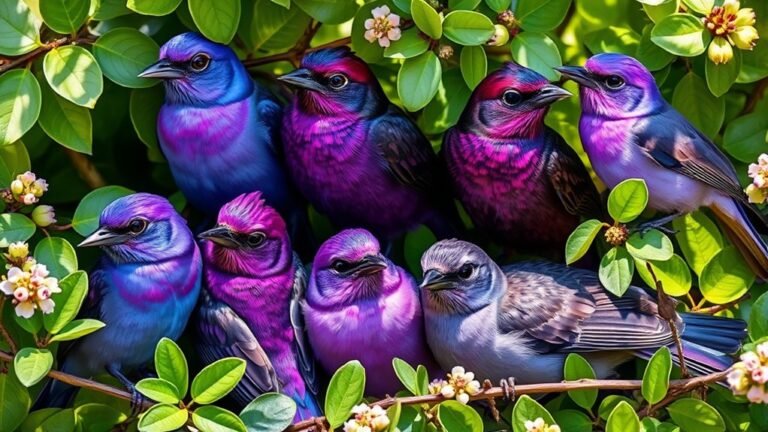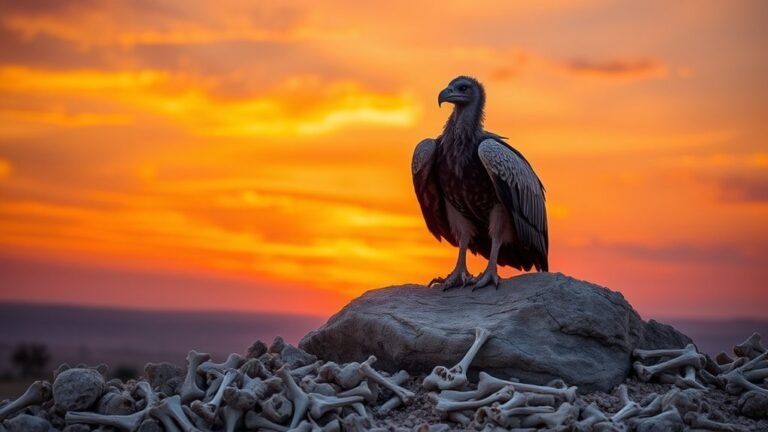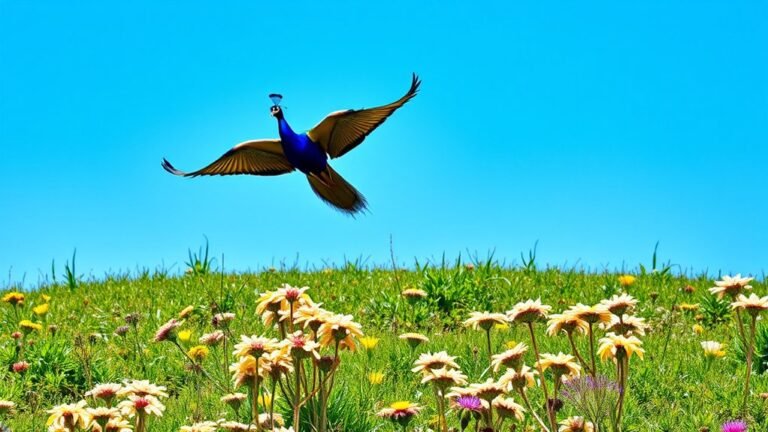California’s State Bird: Facts and Information
California's state bird is the California Quail. Let's learn more about this interesting bird and what makes it special!
The California Quail is a small bird with some unique features. Males have bright colors, which helps us tell them apart from females. They are good at living in different places, from forests to grasslands.
These quails like to be in groups. They often eat together, which helps them stay safe. This social behavior is an important part of how they live.
When it comes to raising young, the California Quail builds its nest on the ground. The baby quails, called chicks, are able to walk and find food soon after they are born.
These birds are also important for the environment. They help spread seeds and keep the ecosystem healthy.
So, the California Quail is not just a pretty bird; it plays a vital role in California's nature, showing how connected all living things are. Isn't that cool?
A Quick Overview
The California Quail is the state bird of California. It represents the state's wonderful wildlife.
These birds are easy to spot because male California Quails have a unique tuft of feathers on their heads. This makes them charming and recognizable.
California Quails like to live in grasslands, scrublands, and even in cities. They fit in well in many different places.
Their diet mainly consists of seeds and grains. This is important because they help spread seeds in their environment, which benefits the ecosystem.
California Quails usually have about 10 to 12 eggs in each nest. The baby quails, called chicks, are precocial. This means they can walk and leave the nest soon after they are born.
In short, California Quails are special birds that add to the beauty of California's nature!
Overview of the California Quail

When you think about wildlife in California, the California Quail is hard to miss. These birds are special because they live in many places, like grasslands and scrublands. They're great at hiding from predators due to their colors and patterns, which help them blend in with their surroundings.
California Quail have unique calls that sound very distinct. These calls help them talk to each other and warn about danger. The famous "California" call is especially noticeable and creates a friendly vibe among quails.
Learning about these birds can help us appreciate how important they're to California's ecosystems. They add beauty to the landscape and play a key role in nature.
Physical Characteristics
California Quail are unique birds with special features that make them stand out. They're small, usually 9 to 10 inches long. Their round bodies and short tails give them a cute shape.
The males have bright colors, showing gray, brown, and rusty shades, while the females are more muted with tan and brown. This helps them hide from predators.
One of the most interesting things about male California Quail is their topknot, a little feather tuft on their heads. The size of these birds can change depending on where they live and what food is available.
Some quails may be a bit bigger if they've more food to eat. These physical traits help California Quail survive in their environment. Their charming appearance makes them delightful members of the bird community.
Habitat and Distribution

California Quail are birds you might often think of when you picture the sunny state of California. However, they actually live in many places across the western United States and parts of Mexico.
These birds like to stay in grasslands, open hills, and scrub areas where they can find plenty of native plants to eat.
California Quail are pretty adaptable. You can even find them in parks and gardens in cities! They enjoy being close to people.
Even in urban areas, they look for homes where they can find food and places to hide.
Knowing where California Quail live helps us appreciate how they fit into both nature and our neighborhoods.
Diet and Feeding Habits
California Quail live in many different places, and they eat mostly seeds, grains, and green plants.
They're good at finding food because they've smart ways to look for it. When you learn about what they eat, you can see how important they're to the ecosystem.
Quail use their sharp eyesight and work together in groups to find food easily.
They usually search for food on the ground, scratching the dirt to uncover seeds or looking around bushes for tasty green leaves.
Behavior and Social Structure

California Quail are interesting birds with unique behaviors and social structures that help them survive. They often form flocks, which makes them safer from predators. In these groups, dominant males take the lead and establish their territories. The females and younger quail follow these leaders.
This social structure helps them find food better and stay safe. When they search for food, they use different calls to communicate. These sounds help them stay connected and alert to any dangers around.
The friendships in the flock not only help them find food but also give them a sense of belonging, which is important for their health. Learning about how California Quail interact gives us a better understanding of how they adapt and thrive in different places across California.
Reproduction and Nesting
California Quail breed once a year. Their mating process is interesting. Male quails attract female quails with sounds and fun movements. This helps them form a bond for mating.
After finding a partner, the female starts to nest. She looks for materials like grasses, leaves, and feathers to build a safe place for her eggs. A typical clutch of eggs has about 10 to 12 eggs. The female sits on them for about 23 days until they hatch.
When the chicks hatch, they can leave the nest quickly. This helps them stay safe from predators. This way of having babies helps California Quail live and thrive in different habitats.
Cultural Significance in California
The California Quail is an important part of California's culture. This bird represents the state's beautiful landscapes and rich history. You can see the quail in local art, festivals, and even on menus, showing how special it's to the community.
People often hear the quail's unique call during gatherings, stirring up happy memories and a feeling of togetherness. The quail can thrive in many environments, which shows the resilient spirit of California's people.
Conservation Status
The California Quail has a stable population, but it faces some challenges.
These birds lose their homes because of urban development and farming. These activities take away the natural spaces that quails need for shelter and food.
To help the California Quail, we need to work on conservation. Local groups and governments are doing their part.
They're focusing on preserving habitats, like grasslands and scrub areas, where quails live and thrive.
Getting involved in these projects can connect you to a community that cares about wildlife.
When you support habitat restoration, you help the California Quail and improve the whole environment around us.
Together, we can protect this special bird.
Birdwatching Tips for California Quail
Watching California Quail in the wild can be a fun and exciting activity. To have the best time, get good binoculars that have at least 8x zoom. This way, you can see the quail clearly, even from a distance.
Look for quail in places like chaparral, grassy fields, and open woods. They like to search for food in these areas. The best times to see them are early in the morning or late in the afternoon when they're most active.
Be patient and try to stay quiet. If you make sudden movements or noises, the quail might get scared and fly away. Pay attention to how they behave, listen to their calls, and watch how they interact with each other. This will help you enjoy watching these birds even more.
Connecting with other birdwatchers can also make your experience better. Sharing tips and stories with friends who love birdwatching creates a sense of community.
Enjoy your time watching California Quail!
Frequently Asked Questions
What Is the Lifespan of a California Quail?
The California quail usually lives for about 1.5 to 3 years in the wild. These birds prefer certain habitats, like open areas with bushes and grasses. Learning about where they like to live and how they breed can help us protect them. We want to make sure these lovely birds continue to thrive in their natural homes.
How Do California Quail Communicate With Each Other?
California quail use sounds to talk to each other. They make calls and whistles. They also act together in groups. When they spot danger, they sound alarm signals. This helps them stay close and safe in their groups, called coveys. Their sounds and behaviors show how they connect and support one another.
What Predators Threaten California Quail Populations?
Predators like foxes and hawks can seriously affect California quail numbers. These birds face many challenges from these hunters. When foxes and hawks are around, quail often struggle to survive. This shows how important predator-prey relationships are in nature. Keeping these animals in balance helps both quail and their predators thrive together.
Are California Quail Migratory or Resident Birds?
California quail are mostly resident birds. They like to stay in one place rather than migrate far away. Sometimes, they move around a bit to find food, especially when the weather changes or if their home habitat is not providing enough resources. But overall, they prefer stable environments and don't travel long distances like some other birds do.
How Can I Attract California Quail to My Garden?
To attract California quail, start by planting plants that quail like. This includes native shrubs and grasses. Make sure to add a water source, like shallow dishes, so the quail can drink safely. Create a friendly space in your garden where these lovely birds will feel welcome. Enjoy watching them as they come to visit!

Luna is the passionate founder and author of Birds and You, a website dedicated to sharing her love for birds with fellow enthusiasts. Through her engaging articles and guides, she aims to educate and inspire others to explore the fascinating world of birds. When she’s not writing, you can find Luna observing birds in their natural habitats or sharing beautiful bird photography on Pinterest. Join her on this journey to celebrate and protect our feathered friends!







